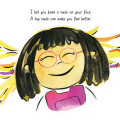
If you were to ask people familiar with Buddhism to identify its two most important wisdom teachings, they’d probably say emptiness and the four noble truths. If you were to ask them further which of the two teachings was more fundamental, they might hesitate, but most of them would probably put emptiness first, on the grounds that the four noble truths deal with a mental problem, while emptiness describes the way things in general are.
It wasn’t always this way. The Buddha himself gave more importance to the four noble truths, and it’s important to understand why.
When he boiled his teaching down to its shortest formulation, he said that he taught just dukkha—suffering and stress—and the cessation of dukkha (Majjhima Nikaya 22; Samyutta Nikaya 22.86). The four noble truths expand on this formulation, defining what suffering is—clinging; how it’s caused—craving and ignorance; the fact that it can be brought to an end by abandoning its cause; and the path of practice that leads to that end. Because part of the path of practice contains desire—the desire, in right effort, to act skillfully so as to go beyond suffering—the four noble truths also expand on one of the Buddha’s main observations about the phenomena of experience: that with the exception of nibbana, they’re all rooted in desire (Anguttara Nikaya 10.58). People aren’t simply passive recipients of their experience. Starting from their desires, they play an active role in shaping it. The strategy implied by the four noble truths is that desire should be retrained so that, instead of causing suffering, it helps act toward suffering’s end.
As for emptiness, the Buddha mentioned it only rarely, but one of his definitions for emptiness (SN 35.85) closely relates it to another teaching that he mentioned a great deal. That’s the teaching popularly known as the three characteristics, and that the Buddha himself called not “characteristics” but “perceptions”: inconstancy, suffering or stress, and not-self (AN 6:102–104). When explaining these perceptions, he taught that if you perceive fabricated things—all things conditioned by acts of intention—as inconstant, you’ll also see that they’re stressful and thus not worth identifying as you or yours.
His purpose in teaching these perceptions was that they be applied to suffering and its cause as a way of fostering dispassion both for the objects of clinging and craving and for the acts of clinging and craving themselves. In this way, these perceptions were aids in carrying out the duties appropriate to the four noble truths: to comprehend suffering, to abandon its cause, to realize its cessation by developing the path. In other words, the four noble truths and their duties supplied the context for the three perceptions and determined their role in the practice.
However, over the centuries, as the three perceptions were renamed the three characteristics, they morphed in two other ways as well. First, they turned into a metaphysical teaching, as the characteristics of what things are: all are devoid of any essence because they’re impermanent, and—since nothing has any essence—there is no self. Second, because the three characteristics were now metaphysical truths, they became the context within which the four noble truths were true.
This switch in roles meant that the four noble truths morphed as well. Whereas the Buddha had identified suffering with all types of clinging—even the act of clinging to the phenomenon of the deathless [amata-dhamma], the unchanging dimension touched at the first taste of awakening —the relationship between clinging and suffering was now explained by the metaphysical fact that all possible objects of clinging were impermanent. To cling to them as if they were permanent has to result in sorrow and disappointment.
As for the ignorance that underlies craving: Whereas the Buddha had defined it as ignorance of the four noble truths, it was now defined as ignorance of the three characteristics. People cling and crave because they don’t realize that nothing has any essence and that there is no self. If they were to realize the truth of these teachings through direct experience—this became the purpose of mindfulness practice—they wouldn’t cling any more and so wouldn’t suffer.
This is how this switch in context, giving priority to the three characteristics over the four noble truths, has come to dominate modern Buddhism. The common pattern is that when modern authors explain right view, which the Buddha equated with seeing things in terms of the four noble truths, the discussion quickly switches from the four noble truths to the three characteristics to explain why clinging leads to suffering. Clinging is no longer directly equated with suffering; instead, it causes suffering because it assumes permanence and essence in impermanent things.
Even teachers who deny the truth of the four noble truths—on the grounds that the principle of impermanence means that no statement can be true everywhere for everyone—still accept the principle of impermanence as a metaphysical truth accurately describing the way things everywhere are.
Popular understandings of the Buddha’s teachings provide an impoverished view of the potentials for happiness.
As these explanations have percolated through modern culture, both among people who identify themselves as Buddhist and among those who don’t, they’ve given rise to three widespread understandings of the Buddha’s teachings on clinging and how it is best avoided in order to stop suffering:
1. Because there is no self, there is no agent. People are essentially on the receiving end of experience, and they suffer because they cling to the idea that they can resist or control change.
2. To cling means to hold on to something with the misunderstanding that it’s permanent. For this reason, as long as you understand that things are impermanent, you can embrace them briefly as they arise in the present moment, and it doesn’t count as clinging. If you embrace experiences in full realization that you’ll have to let them go in order to embrace whatever comes next, you won’t suffer. As long as you’re fully in the moment with no expectations about the future, you’re fine.
These first two understandings are often illustrated with the image of a perfectly fluid dancer, happily responsive to changes in the music decided by the musicians, switching partners with ease.
A 2015 bestseller, Sapiens: A Brief History of Humankind, by Yuval Noah Harari, devoted a few pages to the place of Buddhism in world history, in the course of which it illustrated these two understandings of the Buddhist approach to suffering with another image: You’re sitting on the ocean shore, watching the waves come in. If you’re stupid enough to want to cling to “good” waves to make them permanent and to push “bad” waves away, you’ll suffer. But if you accept the fact that waves are just waves, fleeting and incessant, and that there’s no way you can either stop or keep them, you can be at peace as you simply watch, with full acceptance, as they do their thing.
The third widespread understanding about the Buddhist stance on clinging is closely related to the other two:
3. Clinging means holding on to fixed views. If you have set ideas about what’s right or wrong, or about how things should be—even about how the Buddha’s teachings should be interpreted—you’ ll suffer. But if you can let go of your fixed views and simply accept the way things are as the way they have to be, you’ ll be fine.
I recently saw a video clip of the French Buddhologist Dominique Trotignon explaining this principle: when asked by a female interviewer to illustrate the practical applications of the teaching on impermanence in daily life, he looked her in the eye and said, “It means lovers have to accept that their love today will have to express itself differently from their love yesterday.”
It’s been argued that these three understandings of the Buddha’s teachings on clinging don’t promote an attitude of unhealthy passivity, on the grounds that if you’re fully attuned to the present moment without clinging, you can be more freely active and creative in how you respond to change. Still, there’s something inherently defeatist in the picture they offer of life and of the possibilities of happiness that we as human beings can find. They allow for no dimension where we can be free from the unpredictability of waves or the self-righteous infidelity of lovers. It’s only within this narrow range of possibilities that our non-clinging creativity can eke out a little peace.
And when we compare these understandings with the Buddha’s actual teachings on clinging and the end of clinging—returning the three characteristics to their original role as three perceptions, and putting the four noble truths back in their rightful place as the context for the three perceptions—we’ll see not only how much the popular understandings of his teachings deviate from what he actually taught, but also what an impoverished view of the potentials for happiness those popular understandings provide.
To begin with, a lot can be learned from looking at the Pali word for “clinging”: upadana. In addition to “clinging,” it also means “sustenance” and “the act of taking sustenance”: in other words, food and the act of feeding. The connection between feeding and suffering was one of the Buddha’s most radical and valuable insights, because it is so counterintuitive and at the same time so useful. Ordinarily, we find so much pleasure in the act of feeding, emotionally as well as physically, that we define our sense of identity by the way we feed off the world and the people around us. It took a person of the Buddha’s genius to see the suffering inherent in feeding, and that all suffering is a type of feeding: the fact that we feed off things that change simply adds an extra layer of stress on top of the stress intrinsic in the felt need always to feed.
And just as we feed off physical food without assuming that it’s going to be permanent, clinging to things doesn’t necessarily mean that we assume them to be permanent. We cling whenever we sense that the effort of clinging is repaid by some sort of satisfaction, permanent or not. We cling because there’s some pleasure in the things to which we cling (SN 22.60). When we can’t find what we’d like to cling to, our hunger forces us to take what we can get. For this reason, the act of embracing things in the present moment still counts as clinging. Even if we’re adept at moving from one changing thing to another, it simply means that we’re serial clingers, taking little bites out of every passing thing. We still suffer in the incessant drive to find the next bite to eat.
This is why being constantly mindful of the truth of impermanence isn’t enough to solve the problem of suffering. To really solve it, we need to change our feeding habits—radically—so that we can strengthen the mind to the point where it no longer needs to feed. This requires a two-pronged strategy: (a) seeing the drawbacks of our ordinary ways of feeding; and (b) providing the mind with better food in the meantime until it has outgrown the need to feed on anything at all.
The first prong of the strategy is where the three perceptions come in. First you apply them to things to which you might cling or crave, to see that the benefits of holding on to those things are far outweighed by the drawbacks. You focus on the extent to which the happiness they provide is inconstant, and that because it’s inconstant, the effort to keep it going involves stress. When you see that the happiness isn’t worth the effort of the clinging, you realize that it’s not worthy to be claimed as you or yours. It’s not-self: in other words, not worth claiming as self. In this way, the perception of not-self isn’t a metaphysical assertion. It’s a value judgment: that the effort to define yourself around the act of feeding on those things simply isn’t worth it.
This analysis works, however, only if you have something better to feed on in the interim. Otherwise, you’ll simply go back to your old feeding habits. Nobody ever stopped eating simply through the realization that foods and stomachs are impermanent.
In the practice to gain freedom from suffering, the four noble truths must always come first.
This is where the second prong of the Buddha’s strategy comes in. You develop the path as your interim nourishment, focusing in particular on the pleasure and rapture of right concentration as your alternative source of food (AN 7.63). When the path is fully developed, it opens to another dimension entirely: the deathless, a happiness beyond the reach of space, time, and the six senses.
But because the mind is such a habitual feeder, on its first encounter with the deathless it tries to feed on it—which turns the experience into a phenomenon, and stands in the way of full awakening. This is where the perception of not-self gets employed once more, to counteract this last form of clinging: to the deathless. Even though the deathless in itself is neither stressful nor inconstant, any act of clinging to it has to involve stress. So the perception of not-self has to be applied here as well, to peel away this last obstacle to full awakening beyond all phenomena. When this perception has done its work, “not-self” gets put aside—just as everything else is let go—and the mind, free from hunger, gains full release.
A traditional image for this release, which comes from employing the three perceptions in the context of the four noble truths, is of a person standing on firm ground after taking the raft of the noble eightfold path over a river in flood. Safe from the waves and currents of the river, the person is totally free—even freer than the image can convey. There’s nothing intrinsically hunger-free about standing on a riverbank—it’s more a symbol of relief—but everyone who has experienced what the image is pointing to guarantees that, to the extent that you can call it a place, it’s a place of no hunger and so no need for desire.
If we compare this image with that of the person on the shore of the ocean watching the waves, we can get a sense of how limited the happiness is that’s offered by understanding the four noble truths in the context of the three characteristics, as opposed to the happiness offered by understanding the three perceptions in the context of the four noble truths.
To begin with, the Buddha’s image of crossing the river doesn’t put quotation marks around concepts of good and bad waves in the water. The flood is genuinely bad, and the ultimate goodness in life is when you can truly get beyond it.
Second, unlike the image of sitting on the shore, watching an ocean beyond your control, the Buddha’s image conveys the point that there’s something you can do to get to safety: you have within you the power to follow the duties of the four noble truths and develop the path that will take you to the other side.
Third, to sit watching the ocean waves come ashore is peaceful and desirable only as long as you’re wealthy enough to be at a resort, with someone to bring you food, drink, and shelter on a regular basis. Otherwise, you have to keep searching for these things on your own. And even at the resort, you’re not safe from being swept away by tsunamis and storms.
The image of crossing the river to safety on the farther shore also offers an enlightening perspective on the view that all fixed views should be abandoned. In the classic interpretation of the image, the river stands for the fourfold flood of sensuality, becoming, views, and ignorance, while the raft of the noble eightfold path includes right view. Although it’s true that the raft is abandoned on reaching the further shore, you still have to hold on to it while you’re crossing the river. Otherwise, you’ll be swept downstream.
What’s rarely noticed is the paradox contained in the image. Right view, seeing things in terms of the four noble truths, is part of the raft needed to cross over the flood of views (SN 35.187). As the Buddha saw, it’s the only view that can perform this function, taking you safely all the way across the river and delivering you to the farther shore.
It can take you all the way across because it’s always true and relevant. Cultural changes may affect what we choose to feed on, but the fact of feeding is a constant, as is the connection between suffering and the need to feed. In that sense, right view counts as fixed. It can never be replaced by a more effective understanding of suffering. At the same time, it’s always relevant in that the framework of the four noble truths can be brought to bear on every choice you make at every stage of the practice. Here it differs from the three perceptions, for while the Buddha noted that they’re always true (AN 3.137), they’re not always relevant (MN 136). If, for instance, you perceive the results of all actions, skillful or not, as impermanent, stressful, and not-self, this can dissuade you from making the effort to be skillful in what you do, say, or think.
In addition to being always true and relevant, right view is responsible. It gives reliable guidance on what should and shouldn’t be taken as food for the mind. As the Buddha said, any teaching that can’t give trustworthy guidelines for determining what’s skillful and unskillful to do abdicates a teacher’s primary responsibility to his or her students (AN 3.62). The Buddhologist’s answer to the interviewer exemplifies how irresponsible the teaching to abandon fixed views can be. And the look she gave him showed that she wanted nothing of it.
After taking you responsibly all the way across the river, right view can deliver you to the farther shore because it contains the seeds for its own transcendence, which, as you develop them, deliver you to a transcendent dimension (AN 10.93). Right view does this by focusing on the processes by which the mind creates stress for itself, at the same time encouraging you to abandon those processes when you sense that they’re causing stress. In the beginning, this involves clinging to right view as a tool to pry loose your attachments to gross causes of stress. Over time, as your taste for mental food becomes more refined through its exposure to right concentration, you become sensitive to causes of stress that are more and more subtle. These you abandon as you come to detect them, until eventually there’s nothing else to abandon aside from the path. That’s when right view encourages you to turn the analysis on the act of holding on to and feeding on right view itself. When you can abandon that, there’s nothing left for the mind to cling to, and so it’s freed.
The view that all fixed views should be abandoned, however, doesn’t contain this dynamic. It provides no grounds for deciding what should and shouldn’t be done. It can itself act as an object of craving and clinging, becoming as fixed as any other view. If you decide to drop this view, for whatever reason, it delivers you nowhere. It offers no guidance on how to choose anything better, and as a result you end up clinging to whatever passing view seems attractive. You’re still stuck in the river, grasping at pieces of flotsam and jetsam as the flood carries you away.
This is why it’s always important to remember that, in the practice to gain freedom from suffering, the four noble truths must always come first. They give guidance for the rest of the path, determining the role and function of all of the Buddha’s other teachings—including emptiness and the three perceptions—so that, instead of lulling you into being satisfied with an exposed spot on the beach, they can take you all the way to the safety of full release, beyond the reach of any possible wave.
The post The Far Shore appeared first on Tricycle: The Buddhist Review.
from Teachings – Tricycle: The Buddhist Review
https://tricycle.org/magazine/the-far-shore/
from
https://tricycle.org
#buddhist #buddhism











































